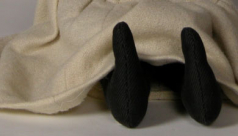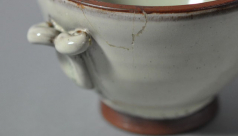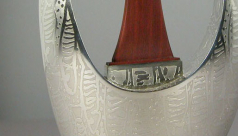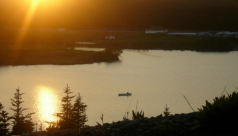Canada 150
Monthly Archive: February Cana
CANADA 150 - Nova Scotia – Black rag doll

The Canadian Decorative Arts section of the Royal Ontario Museum has a reasonable doll collection, featuring both folk and commercially made dolls. Primarily the dolls represent the backgrounds of Anglophone and Francophone early Canadian settlers, like this handmade dancing doll from Quebec, and this knitted doll from Ontario. Both dolls date from the late 1800s/early 1900s. I should clarify that when I talk about the Canadian collection, I am discussing the collections devoted to immigrants and settlers. There are several dolls in the First Nations collection.
CANADA 150 - New Brunswick - Deichmann Pottery

It can be pretty common in rural parts of Canada to find a pottery studio. Lots of Ontario cottagers have favorite potters that they visit in their cottage community. Many of the Gulf Islands in BC have at least one resident potter. Quebec has a hugely successful pottery show that draws in artists from across the province, 1001 Pots, which highlights the rural potter’s lifestyle. It is so common that it’s hard to believe that there were, at one time, pioneers of that way of life.
CANADA 150 - Newfoundland and Labrador - Michael Massie Teapot

My second object from Newfoundland and Labrador is a contemporary piece by silversmith Michael Massie. It is a teapot, mimicking the shape of an ulu knife, with etched designs on the silver body of the pot. The handle is made of bloodwood. Massie is a contemporary Canadian artist who was born in Happy Valley-Goose Bay, Labrador, in 1962. He currently lives on the island portion of the province with his family.
CANADA 150 – Newfoundland and Labrador – Sarah Savarey Hat Box

I’m starting my Canada 150 blogging project in Newfoundland and Labrador. Why? To start, it is the province that lies geographically furthest east, and moving east to west is an easy organizational structure. More deeply, Newfoundland and Labrador was one of the last provinces to join Confederation with Canada in 1949. The vote was contentious and the margin of victory was slim. It’s less likely now, but it once would have been possible to find older residents of the island who considered themselves Newfoundlanders first, Canadians second (if Canadian at all).
